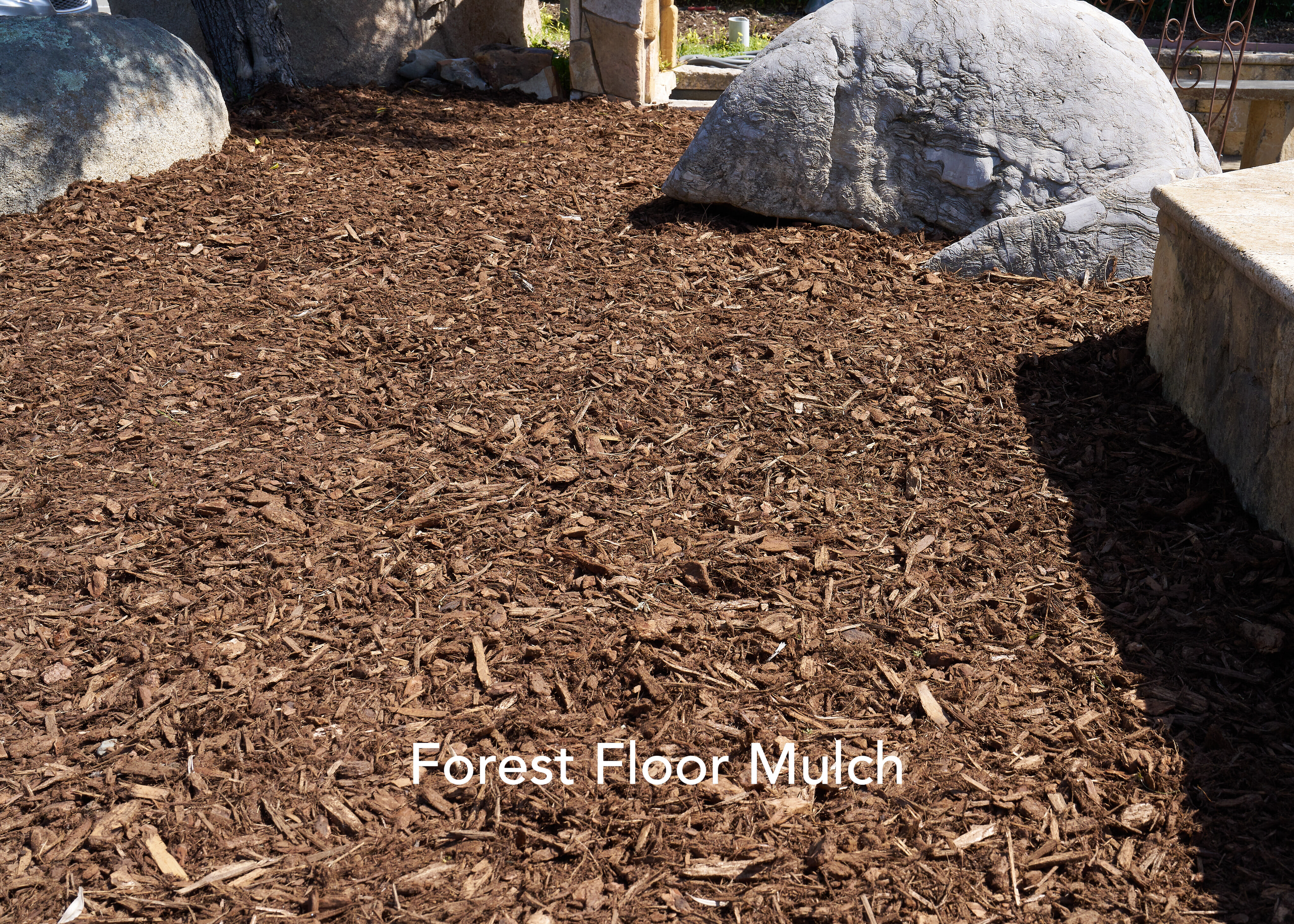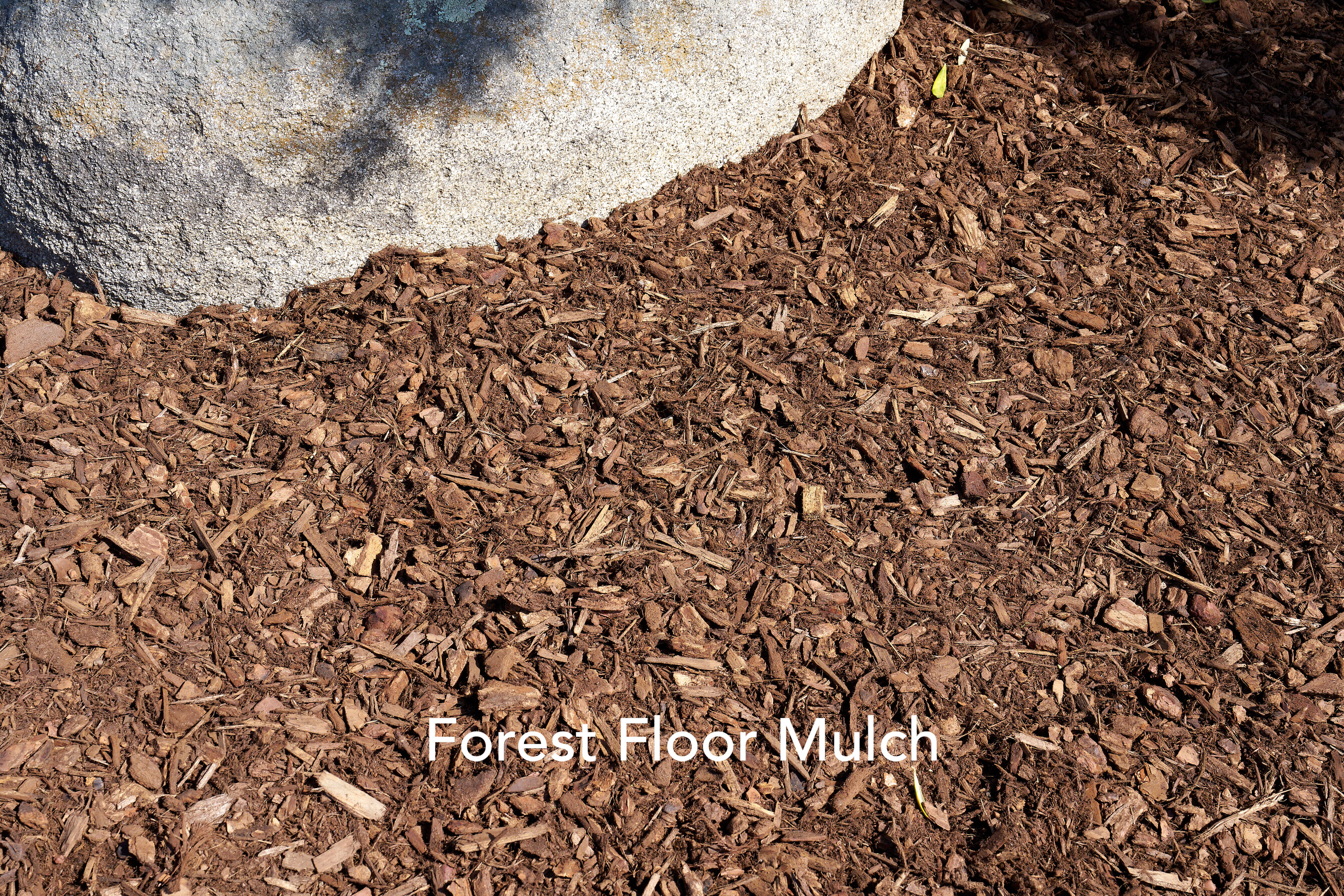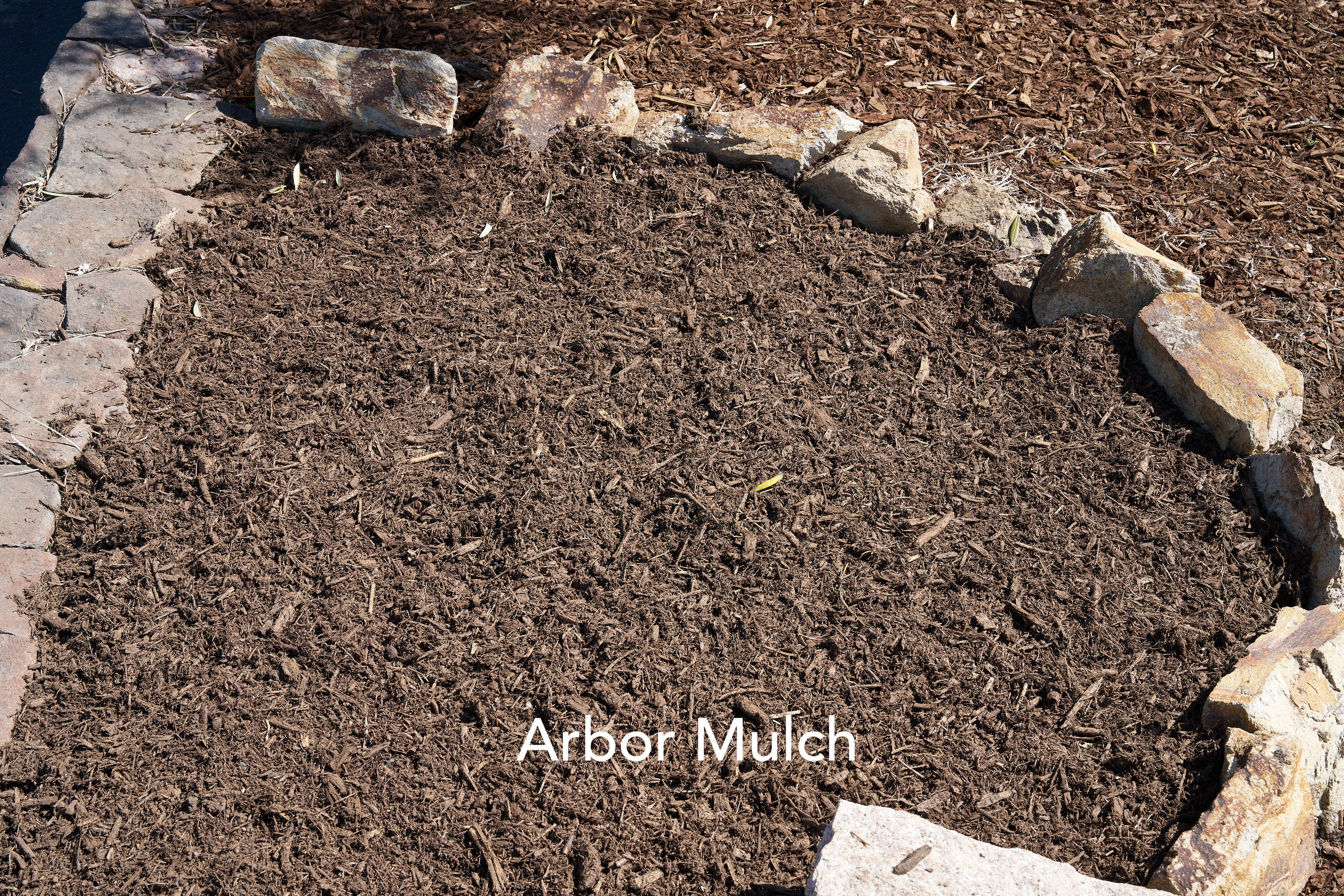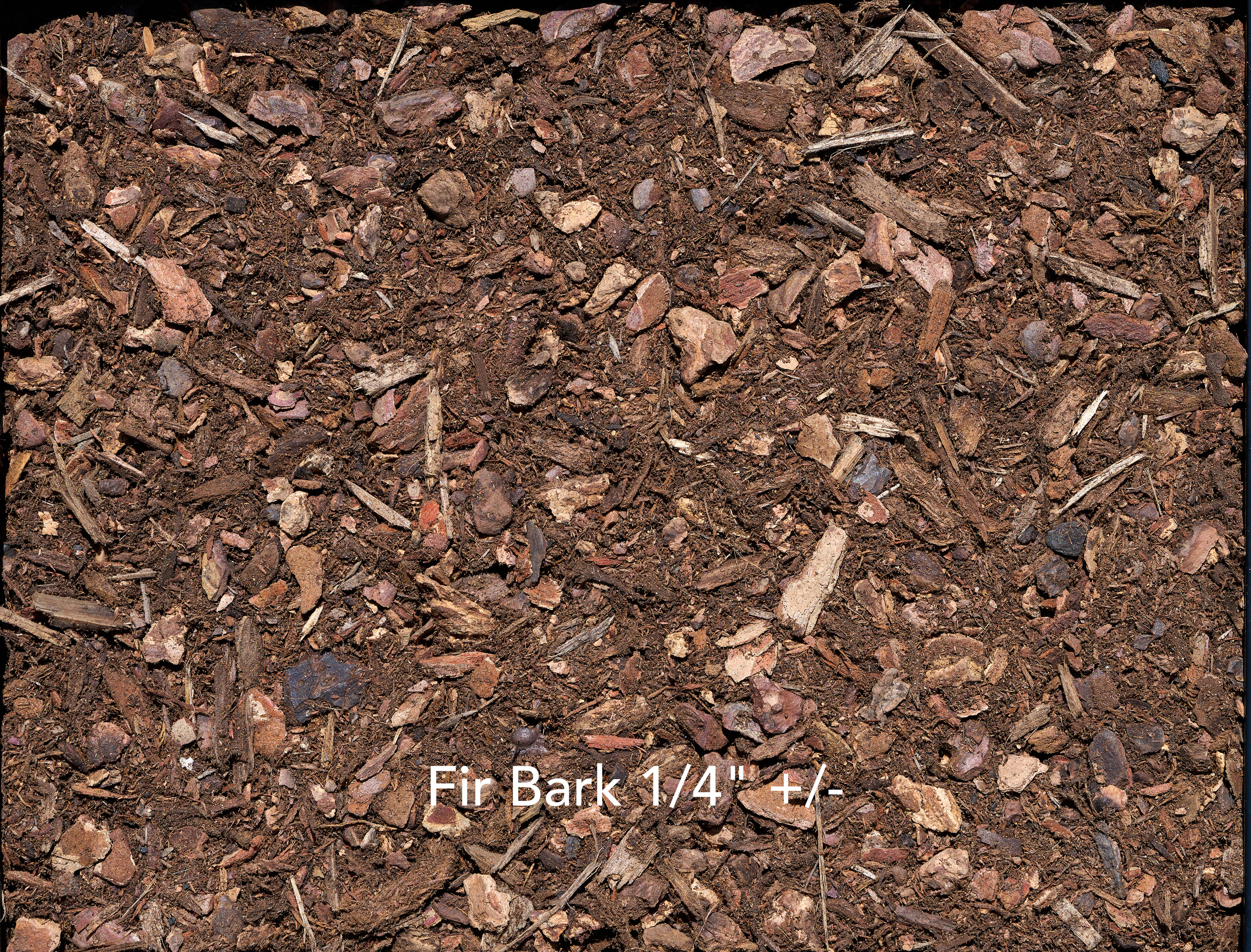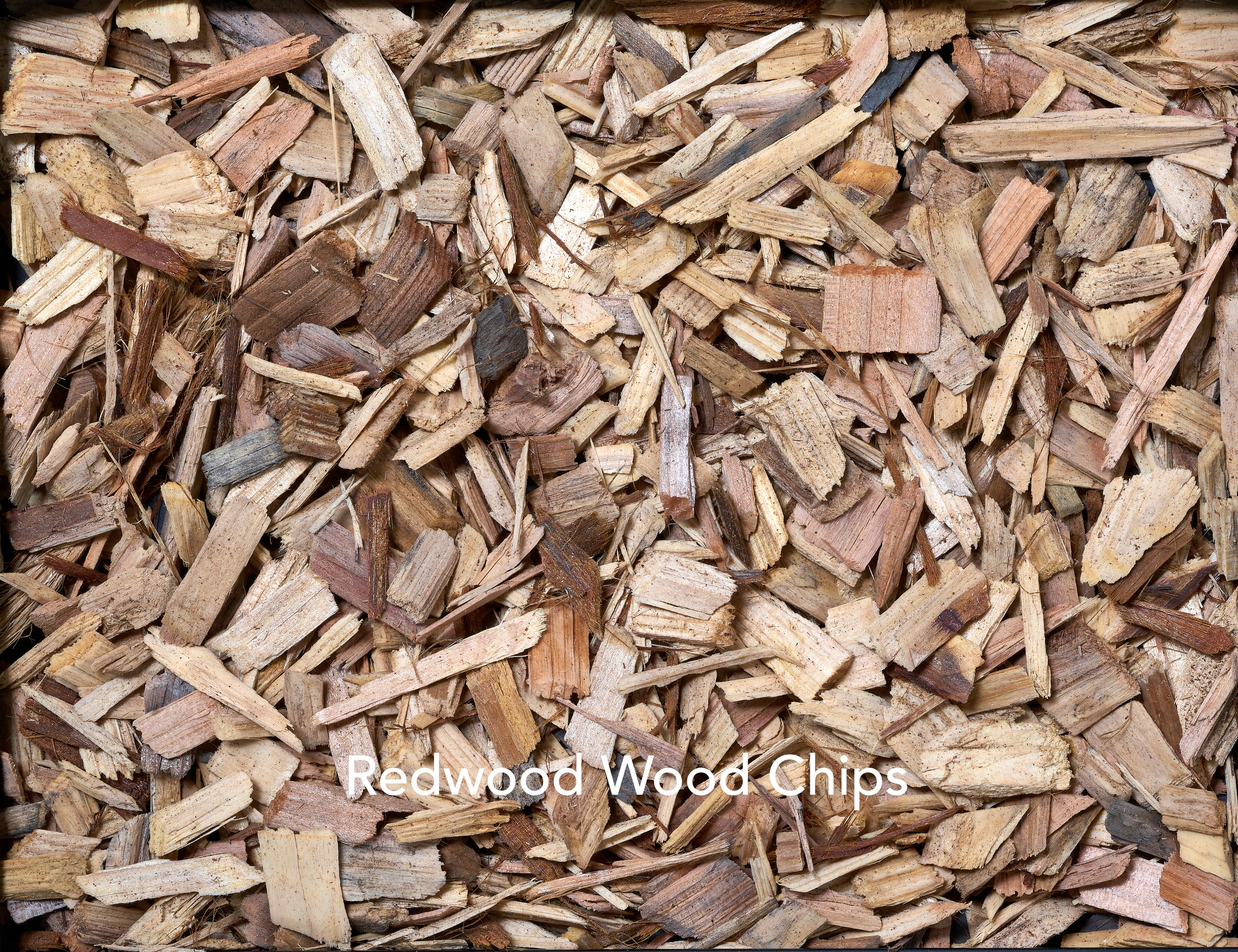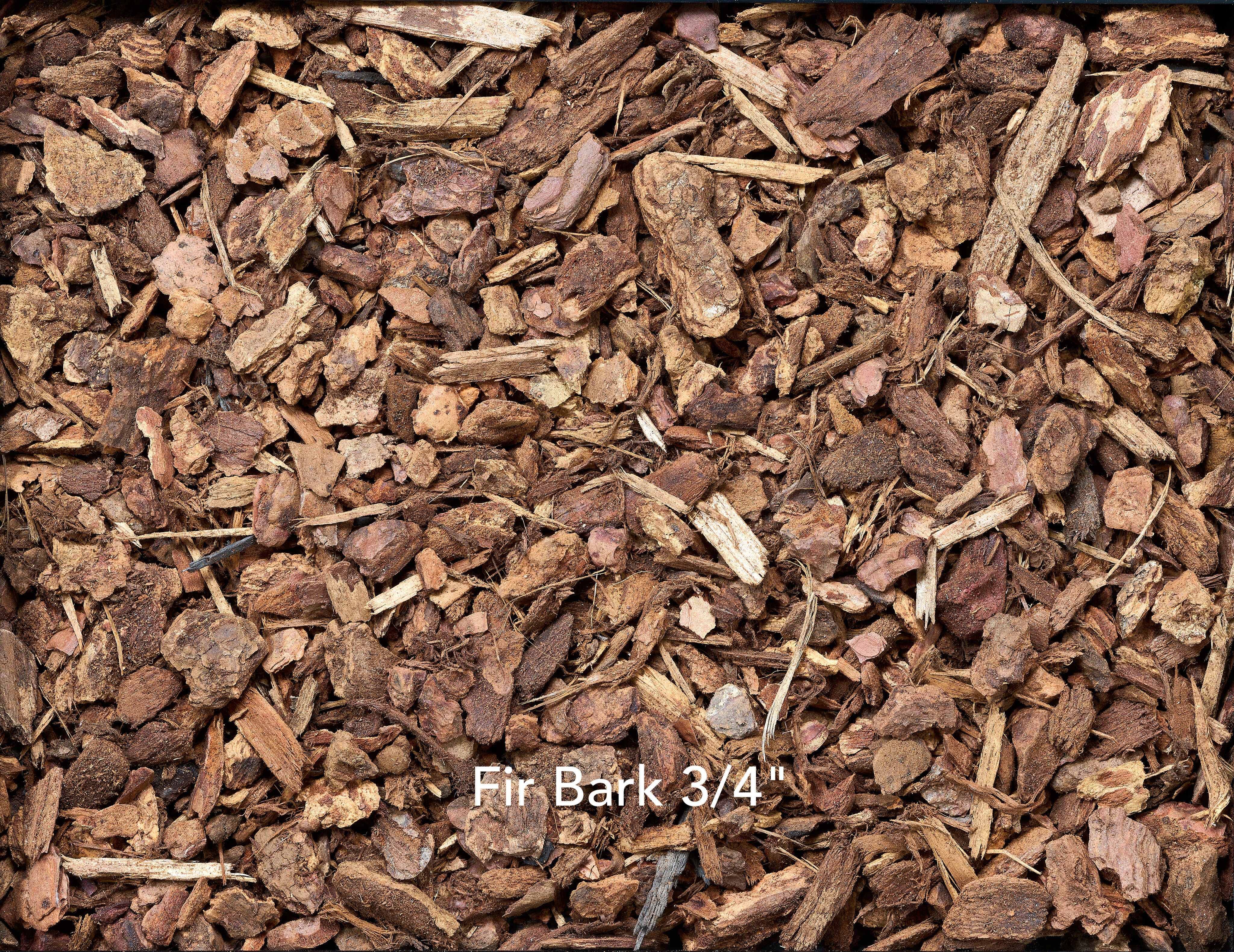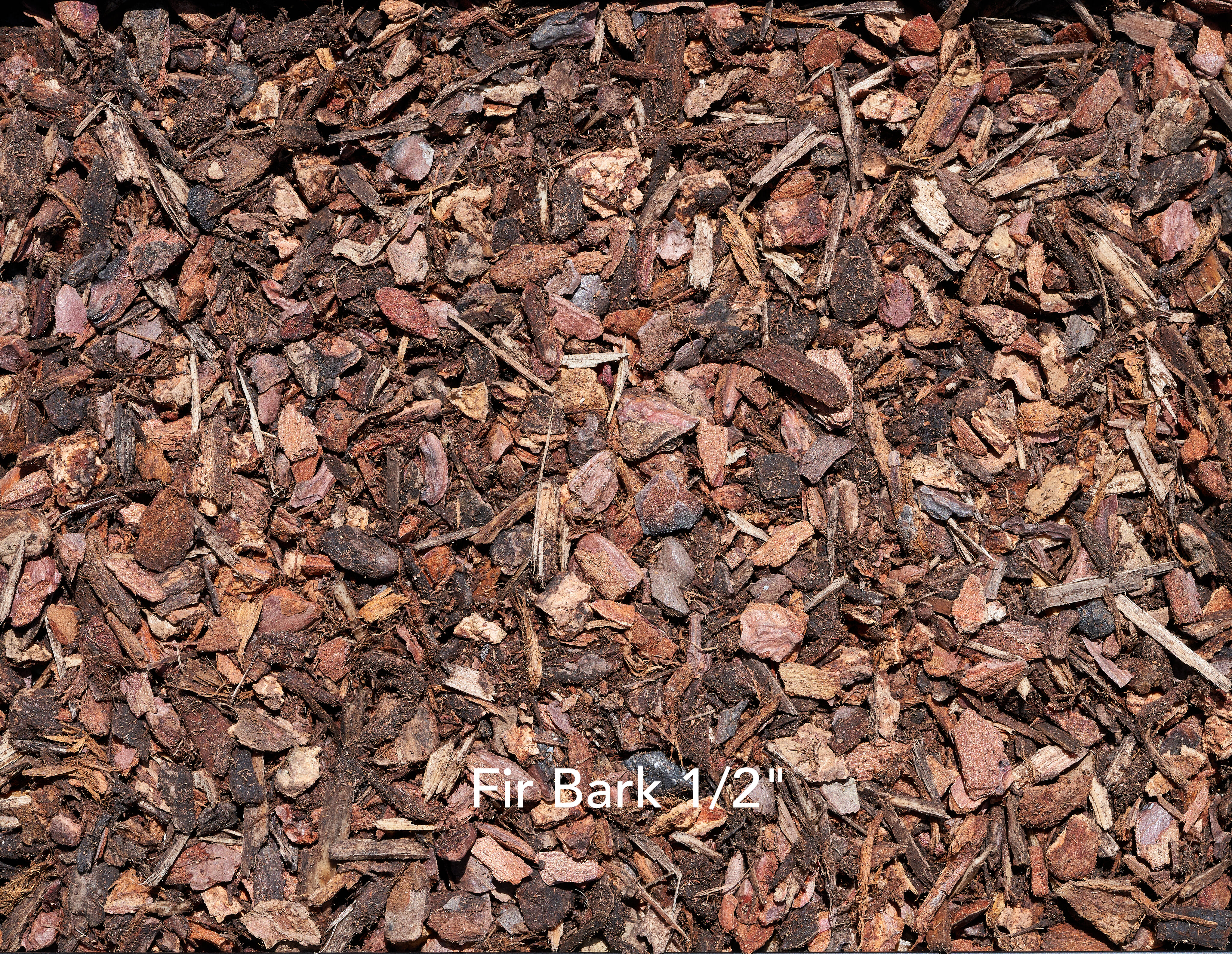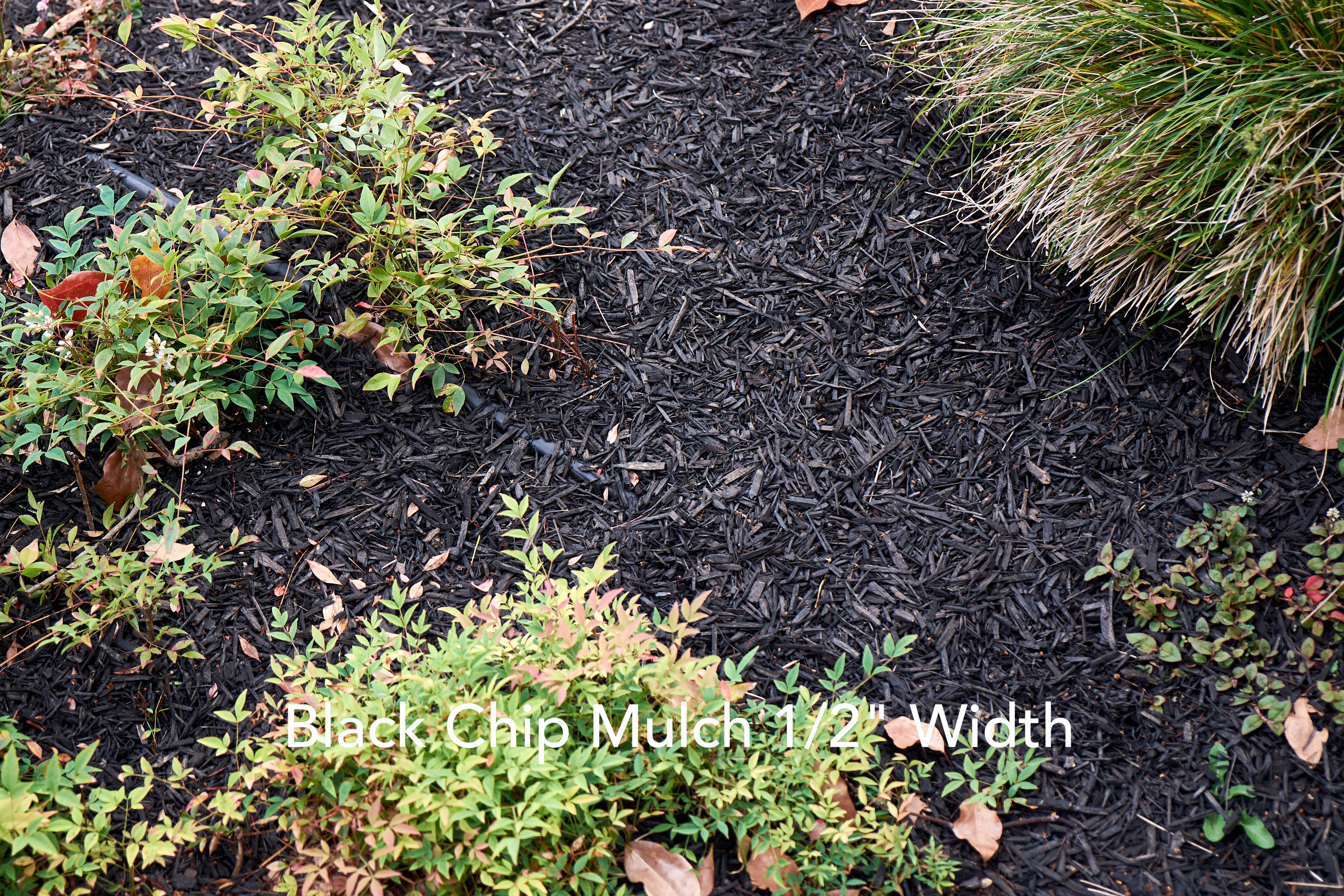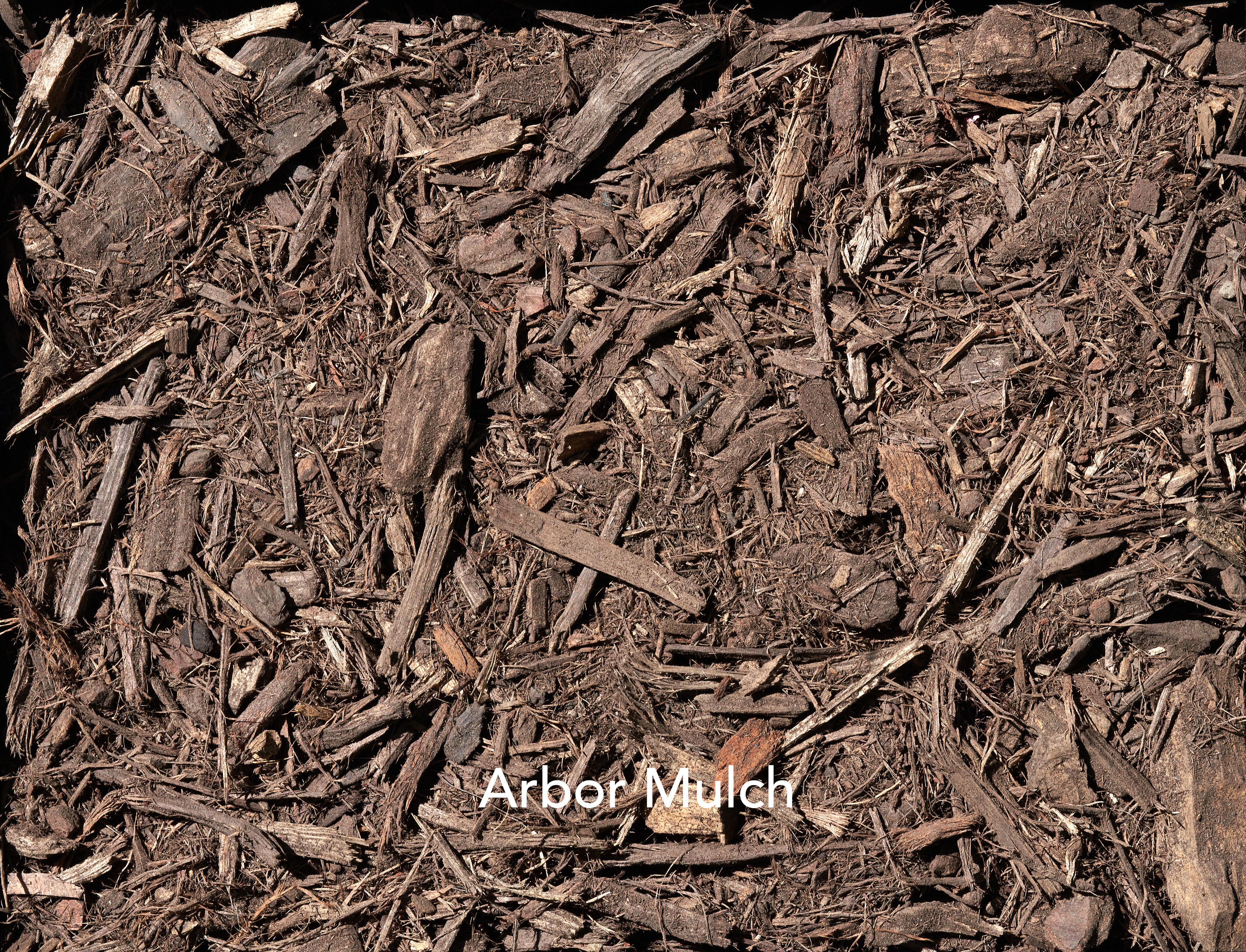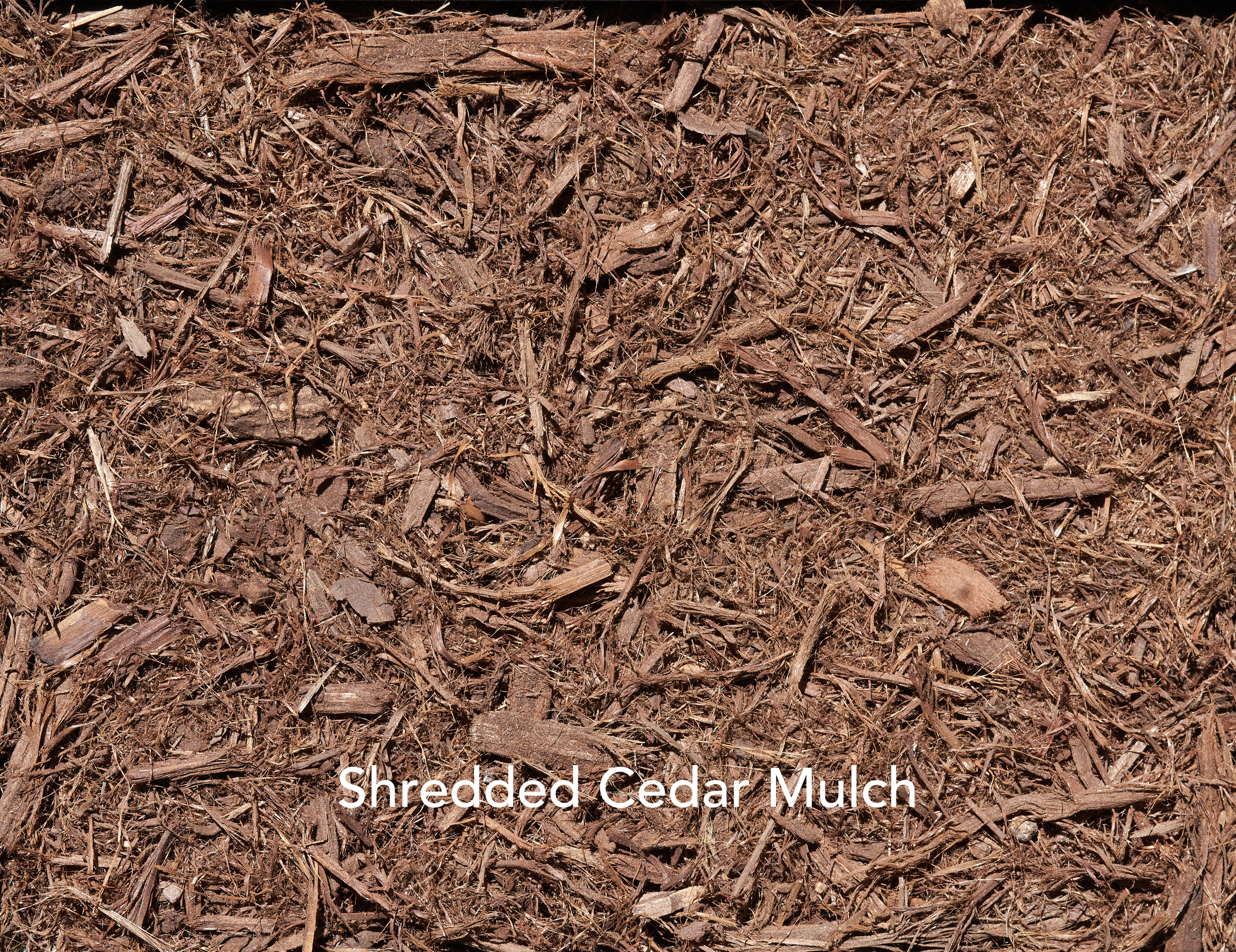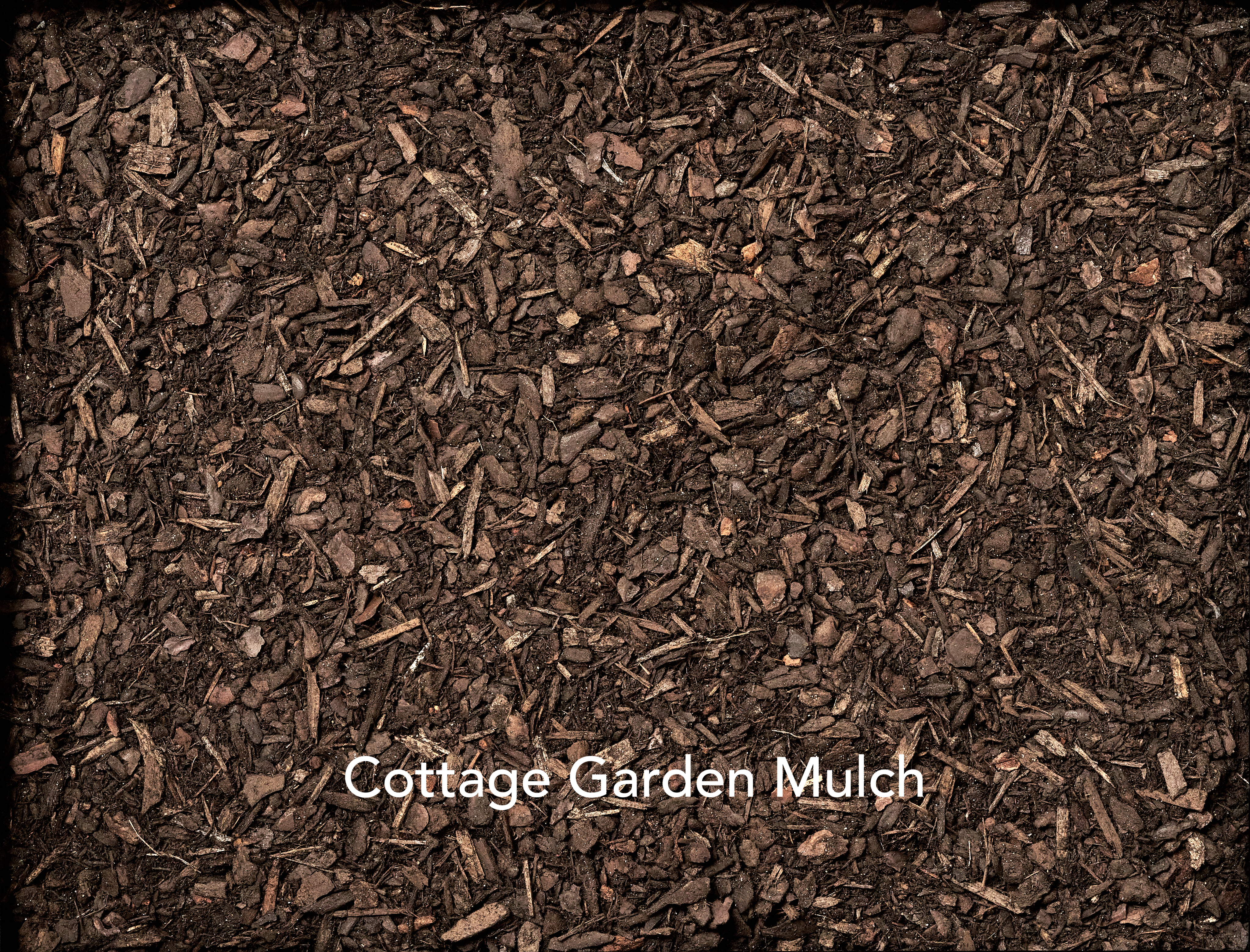Click on the thumbnail to see a larger, very detailed image you can zoom in on.
This is the largest Fir Bark we carry. It contains few fines and is perfect for people who prefer a nugget look where each piece is very apparent. Freshly produced Fir Bark has a reddish-brown color that can brighten the landscape. It eventually matures and becomes an attractive brown color after a few months. It should be noted that the color of the mulch can vary somewhat when it comes from the mill. It is difficult to predict the exact color a Fir Bark will have when it arrives at American Soil & Stone. The color depends on how the logs are stored before debarking, how long the bark is stockpiled, and the weather conditions it has endured. All mulches change with time.
FB ¾” is best spread to an approximate 3” depth. The dry bark will absorb some water during overhead irrigation or rainfall, but most water will make it through to the soil at this depth. Suppression of weeds is average at 3”. The individual bark pieces nestle loosely together, allowing some weeds to work their way through. Protection of the underlying soil is acceptable. Generally, finer barks are better.
$46.95 / yd
$31.75 / 1/2 yd
$7.95 / 2 cu ft bag
Although Fir Bark ½” is only a quarter inch smaller than ¾” FB, its overall appearance differs. The individual particles are less visually dominant, forming a smoother carpet. We recommend spreading it about 2” to 2.5” thick. It packs more tightly than ¾” FB and is probably slightly better at keeping weeds from growing through, even with a thinner application. It will hold back slightly more water during irrigation or rain than ¾” bark. Still, at the recommended thickness, it should not be a problem. However, one should push some aside after overhead irrigation and check the soil moisture. Even when watering uncovered soil, it is always helpful (and sometimes enlightening) to probe into the ground to see how far the water has penetrated. Use this measurement to adjust the duration of watering.
$46.95 / yd
$31.75 / 1/2 yd
$7.95 / 2 cu ft bag
This bark has an average ¼” particle size but ranges up to ½” and down to very small. We make this bark by blending different-sized barks to create a product we feel has some beneficial properties not found to the same extent in other mulches. One of these is its action at the soil surface. Of all our mulches, this and Cottage Garden mulch integrate and protect the soil surface better than any other mulch. It preserves the soil crumb structure and works its way into the soil, where its slow decomposition improves soil structure. We even recommend, before application, taking a rake and ruffing up the ground so that when you spread this mulch, it becomes even more integrated into the soil.
Fir Bark ¼ +/- can be applied in a layer as thin as two inches and be equally effective as any of the above mulches requiring thicker weed suppression applications. However, weed seeds landing on the surface of FB 1/4+/-have a slightly greater chance of germinating and taking root in the mulch. Plants that start to grow and root in mulch are easily plucked out and should become part of a regular maintenance routine.
FB ¼ +/- mulch helps water move more quickly into the ground than soil not mulched because it keeps the soil surface open—however, the maximum infiltration rate is determined by the soil the mulch covers. If it is clay, the rate will be slow. If it is sand, it will be fast. A surface mulch cannot correct this type of problem.
$46.95 / yd
$31.75 / 1/2 yd
$7.95 / 2 cu ft bag
Cottage Garden Mulch is very similar in size to FB 1/4+/-and shares all its excellent qualities. The difference is that it is darker and more earthy in appearance. It is a perfect choice to cover the soil and still have a surface that resembles rich, healthy-looking soil. Work it into the upper inches of soil to provide an open surface that water more easily moves through. As a mulch, all that is needed is a two-inch layer, just like FB1/4+/-. Even when dry, Cottage Garden retains most of its dark color. Once wet, it becomes a very rich dark brown. Like Fir Bark ¼+/-, its small size makes it easy to place around plants, even herbaceous ones. The dark, rich color set off the plants beautifully. This is the perfect mulch for a Cottage Garden! It also looks nice in larger expanses that do not have many plants. Each plant will stand out on the beautiful earthy canvas.
$46.95 / yd
$31.75 / 1/2 yd
$7.95 / 2 cu ft bag
Not all bark breaks into nugget-like pieces when removed from a log. Two commercial timber trees have a bark very different from Douglas Fir. These are the coastal Redwood (Sequoia sempervivums) and the Red Cedar. Their bark is mostly fibrous and, when removed, does not break into small chunks. It comes off the log as stringy sheets. The sheets are held together by the numerous fibers integral to the bark. The removal is best compared to a shredding process. It is then refined by passing it through a hammer mill that reduces its size and exposes more fibers. The process makes the shredded bark much more easily handled than in large, strappy sheets.
The fibrous nature of these barks gives them unique properties much different than the nuggets and granules of Fir Barks.
Shredded Redwood Bark is the most fibrous of the barks. In the photo of this bark, one can easily see fine fiber making up most of it. The combination of its “hairy” texture and color has led to calling this mulch Gorilla Hair. It is best described as lightweight and fluffy. When it is spread as mulch, it has a lot of air space between the fibers. It may need to be tamped down a little, but many people leave it just as it is.
If you are looking for mulch on a hillside or embankment, shredded mulches are the answer. Thanks to the long intertwined fibers, they stay in place. They are also relatively good at weed suppression. Spread Shredded Redwood Bark as a 4” layer if your concern is weed suppression. Weeds have difficulty weaving through the fibrous matrix. An exception is the oxalis species, with clover-like leaves bearing yellow or pink flowers that are extremely common in the Bay Area during winter and spring. These plants produce bulbs that often remain in the ground after weeding and provide enough energy for the young plant growing from the bulb to work through the mulch. It is best to weed Oxalis when it produces flowers since most of the food in the bulb will have been used.
Shredded Redwood Mulch is not as effective in keeping an open soil surface as the two fine Fir Barks, but it is excellent in keeping the soil surface cool due to its insulating properties. There is little concern about water moving through the mulch and into the soil because the structure is open, and water freely flows through.
The two advantages of shredded bark are its stability on slopes and its ability to control weeds. This is true for both Shredded Redwood and Shredded Cedar.
$46.95 / yd
$31.75 / 1/2 yd
$7.95 / 2 cu ft bag
Shredded Cedar Bark is similar in properties and use to Shredded Redwood Bark. But it is less fine-fibered than Shredded Redwood and has a less open structure. This means it will form a denser layer of mulch than Redwood, which can result in better weed suppression. Water infiltration at a 4-inch layer or thicker could be more of a concern than with Redwood. Shredded Cedar is slightly better at keeping the soil surface open than Shredded Redwood, which may last longer.
The downside to Shredded Cedar Mulch is that it is periodically unavailable due to intermittent sawing at the mills. What logs are being debarked and sawed at mills is highly dependent on the market for a type of wood.
$46.95 / yd
$31.75 / 1/2 yd
$7.95 / 2 cu ft bag
Need description.
$46.95 / yd
$31.75 / 1/2 yd
$7.95 / 2 cu ft bag
Need description.
$46.95 / yd
$31.75 / 1/2 yd
$7.95 / 2 cu ft bag
Need description.
$46.95 / yd
$31.75 / 1/2 yd
$7.95 / 2 cu ft bag
Need description.
$46.95 / yd
$31.75 / 1/2 yd
$7.95 / 2 cu ft bag
Need description.
$46.95 / yd
$31.75 / 1/2 yd
$7.95 / 2 cu ft bag
Need description.
$46.95 / yd
$31.75 / 1/2 yd
$7.95 / 2 cu ft bag
Mulch covers a broad range of materials, from bark and wood chips to sheets of plastic or paper. But all mulches share a common feature: they function at the soil's surface and are applied over the soil to achieve their function. In this way, they differ from soil amendments that must be incorporated into the soil to achieve their effect. Mulches are essential to the maintenance of the landscape. They create a healthy environment for plants and, together with soil amendments, produce healthy soils that can be tailored and optimized to the needs of specific plant types.
It is difficult to deny the visual improvement that occurs when mulch is spread over an area, especially one containing plants. The results are like those achieved by framing a picture. It brings the area into focus and, in the case of mulch, ties everything together on the canvas it creates. For this reason, the aesthetics of mulching is often the primary reason for using one. But appearance is only one of the benefits of using mulch. It may be a good idea to identify two or three mulches that you find visually appealing and then compare their other beneficial properties before making your final choice on which to use.
The most successful mulches for weed suppression are those that cover the soil and provide a barrier layer to weeds growing below, trying to reach the sunlight. Unfortunately, many germinating weed seeds are adept at weaving through layers of mulch. On the bright side, the number of weeds making it through the mulch will be less compared to an unmulched area. On the not-so-bright side, you will have to do some weeding. Weeds are opportunists. Give them the tiniest patch of ground and some water, and they will love you. Every wannabe evolutionary biologist should study weeds. The ingenious mechanisms they have evolved to multiply and survive are encyclopedic. We will never see a weed on the rare and endangered list of plants. Good luck.
Retaining soil moisture is highly desirable, especially during California's long, dry summers. Soil directly exposed to the sun can have a surface temperature much greater than the air temperature. High soil temperature, dry air, and wind will quickly remove soil moisture. An application of mulch can change all this by providing a protective layer over the soil surface. Mulch combined with drip irrigation can significantly reduce water usage. Even with an overhead watering system, the watering frequency can be reduced and water saved.
Mulches play an often-overlooked role in keeping the soil surface open to air and water infiltration. Good soil is granular. It is composed of aggregates that are a combination of soil particles, organic matter, filaments of fungi, glue-like materials from bacteria, and various other components. Soil scientists refer to this as a soil's crumb structure. Soils with a weak or non-existent crumb structure are easily compacted and display poor drainage. Roots in these soils often do not get sufficient oxygen, may be weakened, and become susceptible to pathogens. Soil without a crumb structure is a serious problem.
Aggregates, or crumbs, at the soil surface are very vulnerable to breakdown when directly exposed to sun, wind, rain, and foot traffic. They may soon disappear, leaving a fine crust on the soil. This can serve as a barrier that impedes the movement of gases and water in and out of the soil, seriously hindering plant growth.
Mulch can solve this problem. A mulch containing fine particles can protect the soil aggregates near the surface, block the constant impact of rain or irrigation water, eliminate the damaging effects of wind, and soften the impact of foot traffic. Water and air infiltration will be improved as the finer mulch particles increase soil aggregation. In addition, the interface between mulch and soil stays moist longer and encourages earthworms and the growth of beneficial soil microorganisms.
American Soil & Stone offers a range of mulches, many sourced from the bark of logs processed at lumber mills. Some of our mulches are derived from the bark of the Douglas Fir, the primary timber tree on the West Coast. When the logs of Douglas Fir are debarked, the bark fractures into chunks. The chunks are screened to various sizes and sold to material yards as high-grade mulch. We offer four mulches made for Douglas Fir bark.
